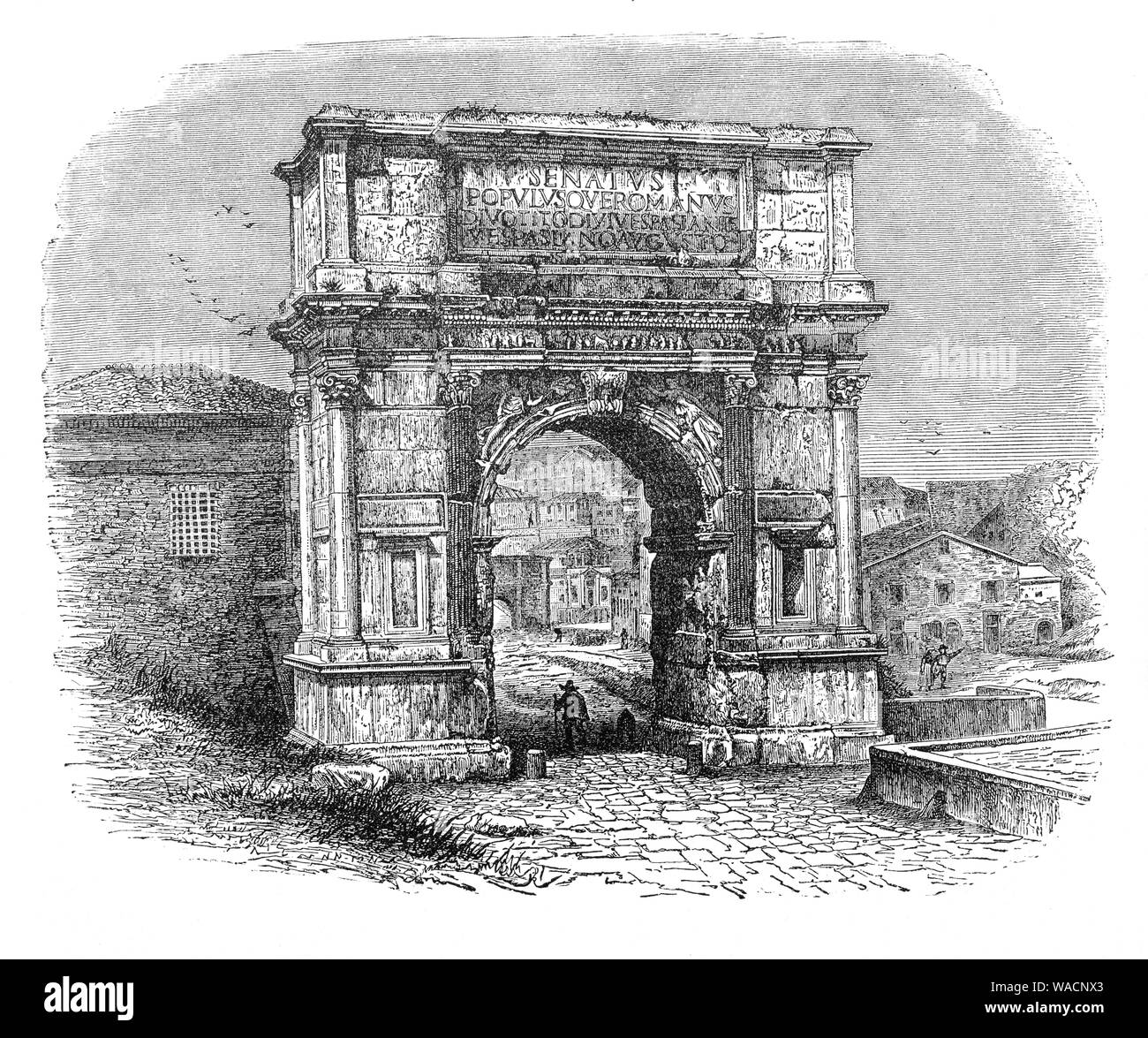A 19th Century view of the Arch of Titus, a 1st Century AD honorific arch, located on the Via Sacra, Rome, near the Roman Forum. It was constructed in c. 81 CE by the Emperor Domitian shortly after the death of his older brother Titus to commemorate Titus's official deification or consecratio and the victory of Titus together with their father, Vespasian, over the Jewish rebellion in Judaea. The arch contains panels depicting the triumphal procession celebrated in 71 CE after the Roman victory culminating in the fall of Jerusalem.

Image details
Contributor:
De Luan / Alamy Stock PhotoImage ID:
WACNX3File size:
42 MB (3.5 MB Compressed download)Releases:
Model - no | Property - noDo I need a release?Dimensions:
4190 x 3500 px | 35.5 x 29.6 cm | 14 x 11.7 inches | 300dpiDate taken:
1850Location:
Via Sacra, Rome, ItalyMore information:
This image is a public domain image, which means either that copyright has expired in the image or the copyright holder has waived their copyright. Alamy charges you a fee for access to the high resolution copy of the image.
This image could have imperfections as it’s either historical or reportage.
A 19th Century view of the Arch of Titus, a 1st Century AD honorific arch, located on the Via Sacra, Rome, near the Roman Forum. It was constructed in c. 81 CE by the Emperor Domitian shortly after the death of his older brother Titus to commemorate Titus's official deification or consecratio and the victory of Titus together with their father, Vespasian, over the Jewish rebellion in Judaea. The arch contains panels depicting the triumphal procession celebrated in 71 CE after the Roman victory culminating in the fall of Jerusalem, and provides one of the few contemporary depictions of artifacts of Herod's Temple. It became a symbol of the Jewish diaspora, and the menorah depicted on the arch served as the model for the menorah used as the emblem of the state of Israel.